#bernard dawson
Explore tagged Tumblr posts
Text
How is it every Election cycle you guys forget about the Electoral loop hole setup by the Europeans to destroy the Popular vote power of the people! We are distracted!

0 notes
Text






every episode of lost (2.08 collision)
Almost 40 days ago on this very Island I tied a man to a tree and tortured him. I tortured him as I've tortured many men - men whose voices I still hear in the night. Should you kill me? Maybe you should. Maybe you were meant to.
#lost#lost abc#michael dawson#sayid jarrah#vincent#ana lucia#rose#bernard#kate austen#sawyer#season 2#screencaps
41 notes
·
View notes
Text

I know this meme is dead but
#uh oh uni is nfl rpf posting on main#uni memes#nfl#national football league#nfl rpf#buffalo bills#josh allen#dawson knox#tyler bass#taylor rapp#amari cooper#khalil shakir#terrel bernard#dion dawkins#james cook#keon coleman#dalton kincaid#mack hollins#nfl meme#nfl memes#memes#meme#area 51
27 notes
·
View notes
Text
Mike announces dumbo Airlines just for Mouses
#house of mouse#mickey mouse#mike the microphone#dumbo dísney#timothy dumbo#Cinderella mice#bernard and bianca#basil of baker street#david q. dawson
30 notes
·
View notes
Text

Dr. No (1962)
Starring:
Sean Connery, Ursula Andress, Jack Lord, Joseph Wiseman, Anthony Dawson, Zena Marshall, John Kitzmiller, Eunice Gayson, Bernard Lee
Directed By:
Terence Young
Genre:
Action/Adventure
Rating:
PG
Run Time:
1 Hour 50 Minutes
Release Date:
5 October 1962 (United Kingdom)
8 May 1963 (United States)
Synopsis:
In the film that launched the James Bond saga, Agent 007 (Sean Connery) battles mysterious Dr. No, a scientific genius bent on destroying the U.S. space program. As the countdown to disaster begins, Bond must go to Jamaica, where he encounters beautiful Honey Ryder (Ursula Andress), to confront a megalomaniacal villain in his massive island headquarters.
#27 days of james bond#007#james bond 007#james bond#27 days of 007#sean connery#ursula andress#joseph wiseman#jack lord#anthony dawson#zena marshall#john kitzmiller#eunice gayson#bernard lee#terence young#dr no#day 01
8 notes
·
View notes
Text
Happy Valentine's Day
Today is St. Valentine's Day. A day to remember St. Valentine and that one special person in your life.
Here are some of my favorite couples from TV and film.


Bruce and Selina. Harley and the Joker.

Peter Parker and Mary Jane.

Anakin Skywalker and Padme Amidala.
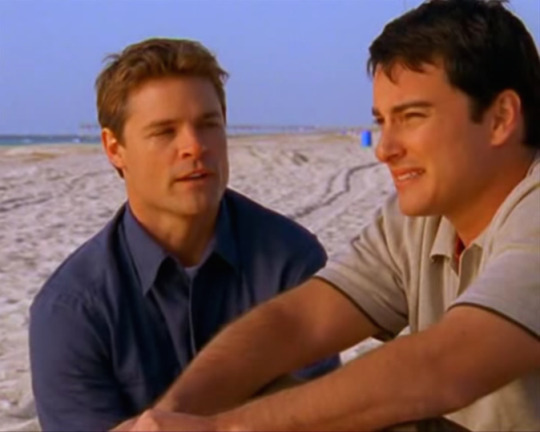
Jack and Doug


Bianca and Bernard. Aladdin and Jasmine.
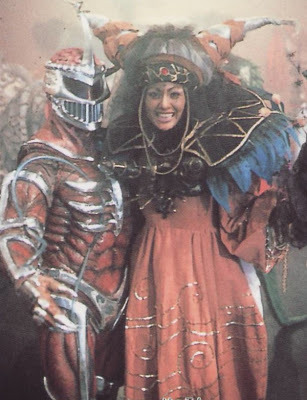

Zedd and Rita. Kimberly and Tommy.

The Monster and his Bride.
May you have a Happy Valentine's Day with that special someone!
#My Post#Valentine's Day#St. Valentine's Day#Couples#TV Couples#Film Couples#Batman#Gotham#Bruce Wayne and Selina Kyle#Harley Quinn and the Joker#Peter Parker and Mary Jane Watson#Spider-Man#Anakin Skywalker and Padme Amidala#Star Wars#Star Wars the Prequels#Jack McPhee and Doug Witter#Dawson's Creek#Aladdin and Jasmine#Aladdin#Bianca and Bernard#The Rescuers#Lord Zedd and Rita Repulsa#Tommy and Kimberly#Power Rangers#The Monster and the Bride#The Bride of Frankenstein
3 notes
·
View notes
Text
20 aprile … ricordiamo …
20 aprile … ricordiamo … #semprevivineiricordi #nomidaricordare #personaggiimportanti #perfettamentechic
2022: Robert Morse, Robert Alan Morse, attore e cantante statunitense. E’ stato sposato due volte e ha avuto cinque figli. (n.1931) 2022: Hilda Bernard, Hilda Sarah Bernhardt, attrice argentina. È stata sposata due volte: con Horacio Zelada e con il regista Jorge Goncalvez. (n.1920) 2021: Tempest Storm, nata Annie Blanche Banks, è stata una ballerina e attrice statunitense di genere burlesque.…
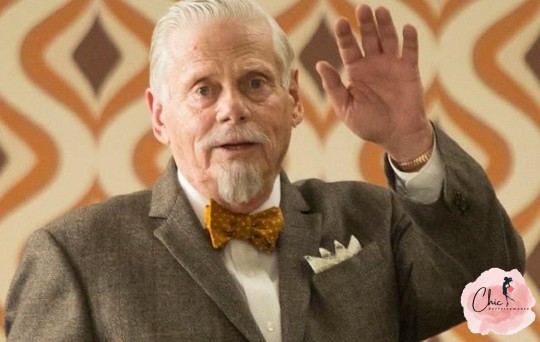
View On WordPress
#20 aprile#Alfred Hawthorn Hill#Annie Blanche Banks#Arthur Grant#Benny Hill#Bruno Persa#Doris Dawson#Flora Carabella#Galeazzo Benti#Galeazzo Bentivoglio#Glady Silvani Smith#Gladys Silvani Smith#Gladys Sylvani#Hilda Bernard#Hilda Sarah Bernhardt#Jean Louis#Jean Louis Berthault#Karl Hirenbach#Lady Duff Gordon#Lucile#Lucy Christiana Duff Gordon#Lucy Christiana Sutherland#Peter Lee Lawrence#Pierre Clement#Ricordiamo#Robert Alan Morse#Robert Morse#Tempest Storm#Tilly Newes#Tilly Wedekind
0 notes
Text
This is your sign , from the Island, to rewatch all 6 seasons of LOST. Grab friends. We have memes dating back to 2004. Get up. You've got work to do.
why is the lost fandom so dead tell your friends force your children to watch it idc WE NEED NEW RECRUITS
#abc lost#lost#lost show#lost tv series#lost tv show#lost abc#ben linus#benjamin linus#john locke#jack shephard#jack#kate x jack#kate austen#sawyer x kate#kate x sayid#sayid jarrah#shannon rutherford#boone carlyle#Walt#michael dawson#Rose#Bernard#sun kwon#jin soo kwon#hugo reyes#hurley reyes#hurley#juliet burke#Juliet#island
348 notes
·
View notes
Text

Welcome to my newest AU: Lost but everyone who ever stepped foot on the island has some type of usable magic power from that moment on. Rules for this is every power has a drawback and it only activates at a critical moment to their character arc. Here's what powers I assigned them:
Jack Shephard: Can heal people using his own life force. He can only give up to 50% of his own life force to do this, if the injury can't be healed by that, he can't save a person. Jack's power doesn't activate until way into Season 6 because he didn't have faith in the island.
Kate Austen: Has the same power as Blake Belladonna in RWBY. Both are characters who are established as people on the run because of their past. Their powers reflect that. Whenever Kate is attacked, if she reacts fast enough, she can leave behind a shadow of herself to take the hit for her.
James "Sawyer" Ford: The angrier he gets, the more damage his punches do. On the other hand, if he gets genuinely sad and devastated, his physical abilities are significantly stunted and damage is almost non-existent.
Charlie Pace: Can focus on a person and play or sing a song that reflects their true nature. This can be used to gather information about them. He can only do this once per person.
Claire Littleton: She can sense danger, even when there otherwise isn't any indication of it.
Hugo "Hurley" Reyes: Can speak to the dead. Activates off-island.
Sun-Hwa Kwon: Can accelerate the growth of plants and the natural healing process of animals and people. She has to know and understand the species to do this.
Jin-Soo Kwon: Can communicate with the ocean to go with the "son of a fisherman" theme. If his head is underwater the ocean tries to kill him tho.
John Locke: Is the only one who doesn't have a power. He's like Mirabel Madrigal. He's deeply important to the story but he has 0 magic. He himself and other characters throughout the story think that he does during varying points of time but it's always the MiB messing with him. He realizes this at the end. Can you tell I like angst yet?
Michael Dawson: Can create a magic shield using his own stamina. Shield disappears when his stamina runs out.
Walter "Walt" Lloyd: Astral Projection. Self-explanatory.
Vincent: Ages normally and can die of old age but is otherwise virtually indestructible. Usually animals don't get any powers but Vincent's was given to him by Jacob directly to assist the survivors.
Sayid Jarrah: Can burn a person with his touch when he wants to. Doing this inflicts an equal amount of emotional pain to him as the physical pain he causes. I like angst.
Shannon Rutherford: Can master any skill within 30 minutes if she puts her mind to it. Never figures this out because she has been told that she's useless all her life and believes it. Only uses this once when she translates French but thinks those are lucky guesses.
Boone Carlyle: Blood-bending. Mostly gave this to him because everytime he angrily stares at someone you can tell that his blood is boiling. Never uses this once during his lifetime though.
Rose Henderson Nadler & Bernard Nadler: Have a soul link with one another. They can always tell how the other is feeling and neither of them can die while the other still lives as long as they're on good terms. Virtually indestructible unless you kill them at the exact same time but why the fuck would you.
Ana Lucia Cortez: Pyromancy. Fits her vibe. Also bound to stamina.
Elizabeth "Libby" Smith: Can read people's emotions.
Mr. Eko: Precognition. Can tell what he needs to do when and can anticipate things a couple seconds before they happen.
Benjamin Linus: Everytime he lies (to convince someone of his lie, sarcasm not included), it slightly alters reality in an unexpected way to make his lie appear like the truth. This is how Anthony Cooper gets to the island after Ben tells John about the magic box. The result of his lies is always unexpected and can backfire. He can't make something specific happen intentionally. His power activated during the purge.
Juliet Burke: Ice-bending. This has nothing to do with her character but I've previously seen Elizabeth Mitchell in Once Upon A Time and The Santa Clause and both times she plays a character that has something to do with winter. Also bound to stamina.
Ethan Rom: Superhuman strength. Self-explanatory. It actually takes multiple shots from 6 guns to take him down in this AU.
Harper Stanhope: Can see people's time of death over their head. Was very confused that Juliet's said 1977 and Ben's was way past his normal life expectancy.
Goodwin Stanhope: Idk what his power is but it's certainly not danger sense. 💀
Roger Linus: Can sense fear. Terrible power for a terrible man. I love Ben, I promise. I also love angst tho. The moment Ben killed him was the only time he didn't sense any fear from him, which scared the shit out of him.
Desmond David Hume: Activates his power after the events of "The Constant". Can see glimpses of people's past and future upon touching them. Can only do this once per person.
Frank Lapidus: Always lands safe. Literally always lands on his feet like a cat. Also applies to planes / helicopters he flies.
Charlotte Staples Lewis: Can speak any language after hearing it spoken once. Growing up with this was very confusing off-island.
Miles Straume: Reading the final thoughts of the dead. Self-explanatory.
Daniel Faraday: Stopping time for up to an hour. After using this power, he can't use it for 24 times the amount of time he stopped time for. Only can use it in present time.
Illana Verdansky: Able to tell when people lie.
Danielle Rousseau: Her bullet or arrow always hits the target unless the target specifically blocks it.
Alexandra Rousseau: Can make herself invisible. Used for stealth.
Karl Martin: Can accelerate his speed. Bound to stamina.
Mikhail Bakunin: Telepathy.
Eloise Hawking: Chain Reaction. Once a day for 5 minutes she can see the effects of every action of hers she thinks about.
Charles Widmore: Can take a glimpse at people's destiny. Only can do this once per person.
Richard Alpert: Can't be killed by anything ever. Can't even die of natural causes. Can't die.
#lost abc#lost#abc lost#benjamin linus#ben linus#jack shephard#kate austen#james sawyer ford#james ford#charlie pace#john locke#claire littleton#sun hwa kwon#jin soo kwon#desmond david hume#michael dawson#juliet burke
38 notes
·
View notes
Text
I thought this ask from @Kedreeva was about mouse blorbos at first glance, and so did my friend who I sent it to (who is into rodents, I sent it for rodent reasons), and so naturally we went down a rabbit hole of the Best Mouse Ships and now I'm making it into a poll. Pictures and explanations below.
Mickey & Minnie
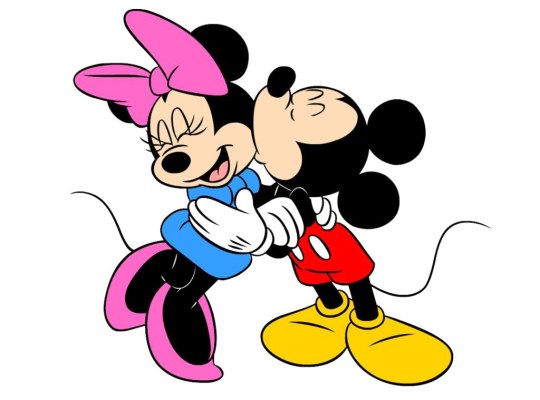
Bernard & Bianca

Chip & Dale
I know they're not mice, but my friend and I agrees they are an iconic rodent queer couple / QPR and they had to be included.

Pinky & The Brain
Does this count as the cranky one is soft for the sunshine one, or moron4moron?
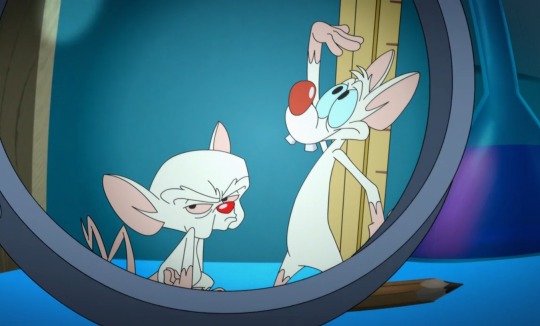
Jacques & Gus

Basil of Baker Street & Dr. David Q. Dawson
The Johnlock of the rodent world.

Father Sexton & Mother Mouse
Potential ace power-couple?

Roquefort the Mouse & his Cookie
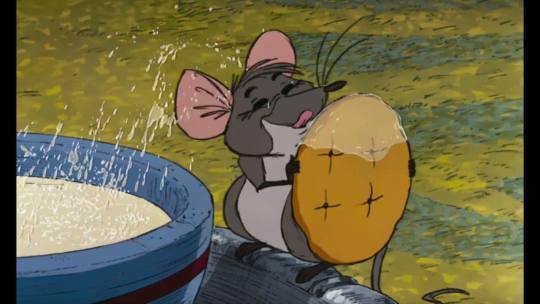
Ratatouille & Linguini

313 notes
·
View notes
Text
Intro Post

✠ my name is Axel, but I go by Metal, or Axe/Ax as well
✠ he/it
✠ i am a minor, and i cannot donate
✠ Im plural, the headmates will sometimes come around but most of them perfer to keep to themselves
⋆most active is Piper (She/It)
✠ saint bernard therian, my therian posting account is @saintly-bernard
✠ im a minor! Weirdos and creeps will be blocked.
✠ t-guy- auadhd, trying to get diagnosed with DID (proving to be difficult because im not an adult)
✠ follow my boyfriend! @satanicsanity <3







Things Im Into

✠ Fraggle Rock, The Dark Crystal, The Labyrinth, Dungeon Meshi, Gravity Falls, Wings Of Fire
✠ Bg3, Spore, Roblox, NITW, AJ, Bugsnax ( @terrevfunkrib )
✠ The Smiths, The Microphones, Ban Ban (NO, not garten), Alex G, Kimya Dawson, Stomach Book, Grouper, And The Kids, Bôa, Panchiko
✠ Fish, Bugs, Maggots
Other

✠ Basic DNI criteria, dont be a creep.
✠ @metal-reblog-edition
✠ kindness is awesome ^^




















(Would add more but i ran out of images T.T)
14 notes
·
View notes
Text
Scapegoat? WF’s always find a loophole no way is DT suppose to get off the hook all because she had dinner and went on a couple trips with a grown man in her personal life and at the same time DT paid a porn star off ? Y’all need to quit!
Iamhedwatts
#hereliesamerica#green with rage#doug watts#fight#dwatts#bernard rhodes#yomi seku#bernard dawson#kwame boaten#jimmie westley#nakedtruth
0 notes
Text




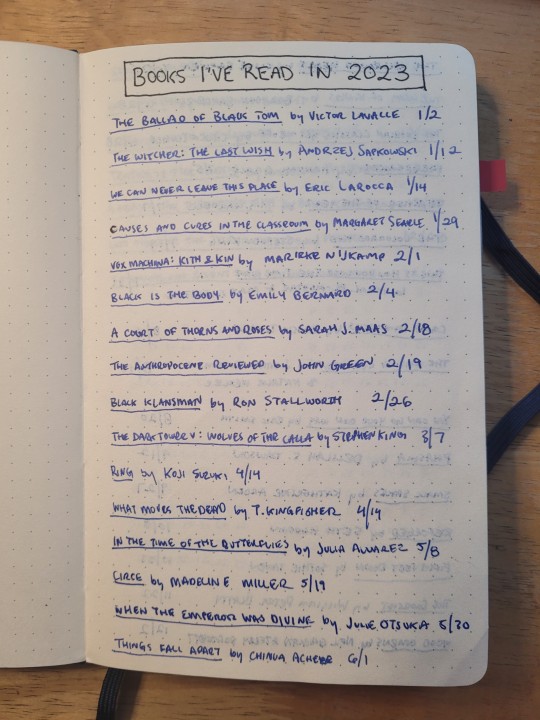
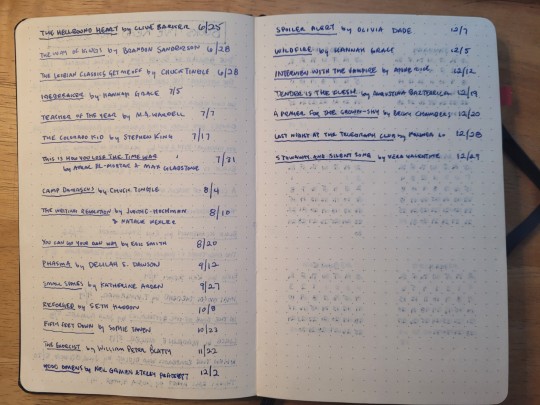
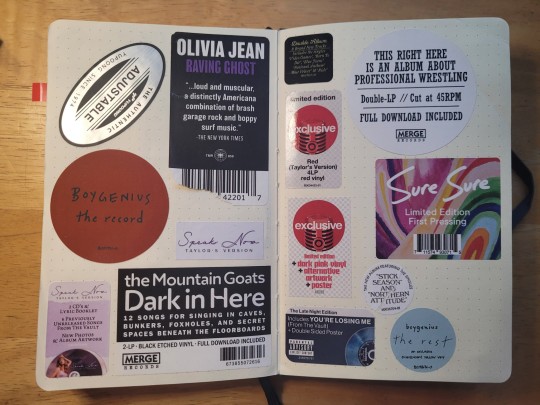

2023 Bullet Journal Cover & Lists
- movies - books - physical music stickers
(typed list below cut)
Movies
X (2022) ★★★★★ 1/9
Pearl (2022) ★★★★★ 1/10
Jason X (2001) ★★★ 1/17
X (2022) ★★★★★ 1/26
Pearl (2022) ★★★★★ 2/11
Rosemary's Baby (1968) ★★★★★ 2/11
Harley Quinn: A Very Problematic Valentine's Day Special (2023) ★★★★★ 2/12
Skinamarink (2022) ★★★★ 3/8
Re-Animator (1985) ★★★★ 3/12
Ring (1998) ★★★★★ 3/12
Ju-On: The Grudge (2002) ★★★★ 3/12
I Know What You Did Last Summer (1997) ★★★★ 4/2
Scary Movie (2000) ★★★ 4/3
Dungeons & Dragons: Honor Among Thieves (2023) ★★★★★ 4/5
Everything Everywhere All at Once (2022) ★★★★★ 4/18
Scary Movie 2 (2001) ★★★ 5/3
Scary Movie 3 (2003) ★★ 5/4
The Green Knight (2021) ★★★★★ 5/20
Black Panther: Wakanda Forever (2022) ★★★★ 5/21
Ant-Man and the Wasp: Quantumania (2023) ★★ 6/6
Evil Dead Rise (2023) ★★★★1/2 6/27
Nimona (2023) ★★★★ 7/2
Barbarian (2022) ★★★★ 7/6
Malignant (2021) ★★★★ 7/7
Barbie (2023) ★★★★★ 7/23
Scream VI (2023) ★★★1/2 8/1
Saw (2004) ★★★★ 8/1
Frozen (2010) ★★ 8/2
Resident Evil: Death Island (2023) ★★★★ 8/21
Studio 666 (2022) ★★★★ 9/4
The Exorcist (1973) ★★★★1/2 9/4
Saw II (2005) ★★★★ 9/9
Saw III (2006) ★★★1/2 9/9
Saw IV (2007) ★★★1/2 9/9
Saw V (2008) ★★★ 9/9
Saw VI (2009) ★★★ 9/9
Saw 3D (2010) ★★ 9/9
Jigsaw (2017) ★★★ 9/10
Miss Americana (2020) ★★★★ 9/10
Spiral: From the Book of Saw (2021) ★★1/2 9/17
Spider-Man: Across the Spider-Verse (2023) ★★★★1/2 9/24
Saw (2004) ★★★★1/2 9/25
Saw II (2005) ★★★★1/2 9/26
Dracula (1931) ★★★★ 10/1
Friday the 13th: The Final Chapter (1984) ★★★1/2 10/1
Friday the 13th: A New Beginning (1985) ★★★★ 10/1\
House of 1000 Corpses (2003) ★★★★ 10/8
Friday the 13th (1980) ★★★★1/2 10/13
Taylor Swift: The Eras Tour (2023) ★★★★�� 10/19
Saw VI (2009) ★★★1/2 10/28
Saw 3D (2010) ★1/2 10/29
Saw X (2023) ★★★★1/2 11/6
Saw IV (2007) ★★★1/2 11/20
Saw X (2023) ★★★★1/2 11/20
Terrifier (2016) ★★★1/2 12/4
Hellraiser III: Hell on Earth (1992) ★★ 12/4
Saw V (2008) ★★★1/2 12/4
Terrifier 2 (2022) ★★★1/2 12/11
The Green Knight (2021) ★★★★★ 12/18
Sonic Christmas Blast(1996) ★★1/2 12/22
Black Christmas (1974) ★★★★★ 12/23
Black Christmas (2006) ★★★1/2 12/24
Saltburn (2023) ★★★★ 12/29
Taylor Swift: Reputation Stadium Tour (2018) ★★★★★ 12/30
Books
The Ballad of Black Tom by Victor Lavalle 1/2
The Witcher: The Last Wish by Andrzej Sakowski 1/12
We Can Never Leave This Place by Eric Larocca 1/14
Causes and Cures in the Classroom by Margaret Searle 1/29
Vox Machina: Kith & Kin by Marieke Nijkamp 2/1
Black is the Body by Emily Bernard 2/4
A Court of Thorns and Roses by Sarah J. Maas 2/18
The Anthropocene Reviewed by John Green 2/19
Black Klansman by Ron Stallworth 2/26
The Dark Tower V: Wolves of the Calla by Stephen King 3/7
Ring by Koji Suzuki 4/14
What Moves the Dead by T. Kingfisher 4/14
In the Time of the Butterflies by Julia Alvarez 5/8
Circe by Madeline Miller 5/19
When the Emperor Was Divine by Julie Otsuka 5/30
Things Fall Apart by Chinua Achebe 6/1
The Hellbound Heart by Clive Barker 6/25
The Way of Kings by Brandon Sanderson 6/28
The Lesbian Classics Get Me Off by Chuck Tingle 6/28
Icebreaker by Hannah Grace 7/5
Teacher of the Yearby M.A. Wardell 7/7
The Colorado Kid by Stephen King 7/17
This is How You Lose the Time War by Amal El-Mohtar & Max Gladstone 7/31
Camp Damascus by Chuck Tingle 8/4
The Writing Revolution by Judith C. Hochman & Natalie Wexler 8/10
You Can Go Your Own Way by Eric Smith 8/20
Phasma by Delilah S. Dawson 9/12
Small Spaces by Katherine Arden 9/27
Reforged by Seth Haddon 10/8
Fifty Feet Down by Sophie Tanen 10/23
The Exorcist by William Peter Blatty 11/22
Good Omens by Neil Gaiman & Terry Pratchett 12/2
Spoiler Alert by Olivia Dade 12/7
Wildfire by Hannah Grace 12/5
Interview With the Vampire by Anne Rice 12/12
Tender is the Flesh by Augustina Bazterrica 12/19
A Prayer for the Crown-Shy by Becky Chambers 12/20
Last Night at the Telegraph Club by Malinda Lo 12/28
Stowaway and Silent Song by Vera Valentine 12/29
Physical Music Media:
(this isn't all of the records/CDs I've gotten or listened to this year, but I figured I'd decipher the stickers I put in the book; these are all of the promo stickers on the outside of the plastic wrapping on the releases)
Beat the Champ - the Mountain Goats
Paradise - Lana del Ray
Red (Taylor's Version) - Taylor Swift
What's it Like? - Sure Sure
Did You Know There's A Tunnel Under Ocean Boulevard? - Lana del Ray
Stick Season - Noah Kahan
The Rest - boygenius
Midnights (Late Night Edition) - Taylor Swift
Raving Ghost - Olivia Jean
The Record - boygenius
Speak Now (Taylor's Version) - Taylor Swift
Dark in Here - the Mountain Goats
Bangerz (10th Anniversary Edition) - Miley Cyrus
God Games - the Kills
1989 (Taylor's Version) - Taylor Swift
#mine#studyblr#notes#aesthetic#bujo#bullet journal#bujolife#bujo aesthetic#bujoinspo#bujoblr#bujo list#2023 reap#booklr#books#film
39 notes
·
View notes
Text

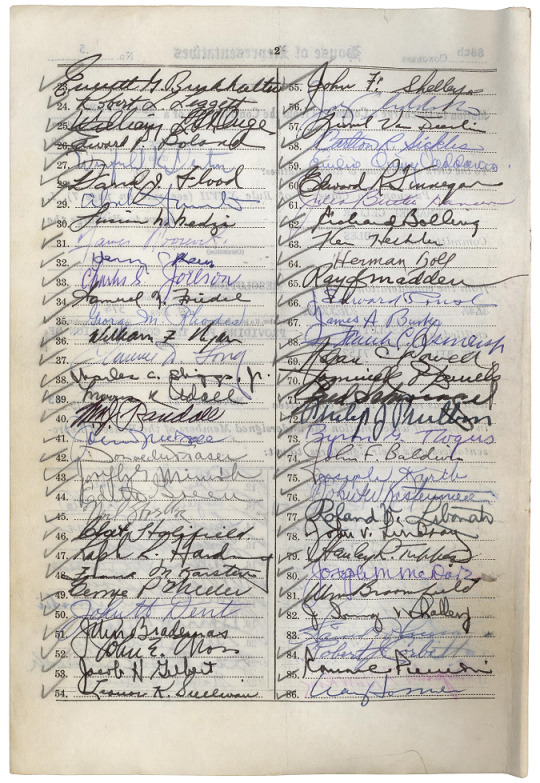
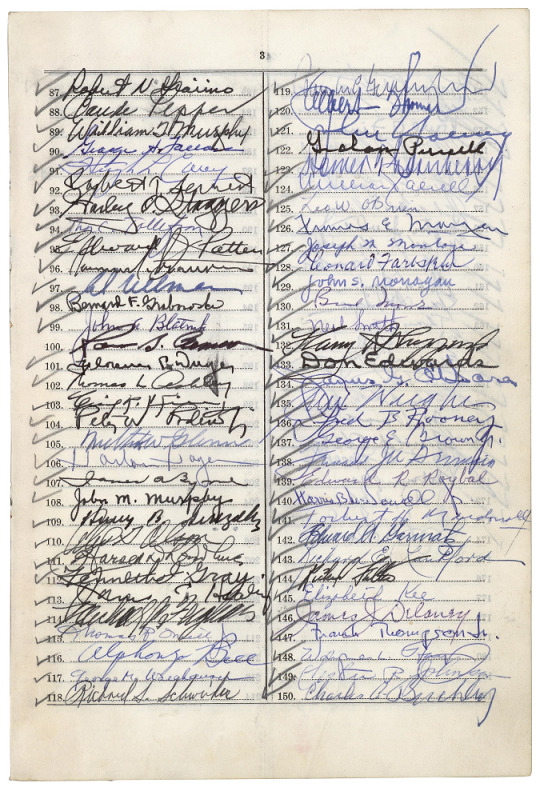

Discharge Petition for H.R. 7152, the Civil Rights Act of 1964
Record Group 233: Records of the U.S. House of RepresentativesSeries: General Records
This item, H.R. 7152, the Civil Rights Act of 1964, faced strong opposition in the House Rules Committee. Howard Smith, Chairman of the committee, refused to schedule hearings for the bill. Emanuel Celler, Chairman of the Judiciary Committee, attempted to use this discharge petition to move the bill out of committee without holding hearings. The petition failed to gain the required majority of Congress (218 signatures), but forced Chairman Smith to schedule hearings.
88th CONGRESS. House of Representatives No. 5 Motion to Discharge a Committee from the Consideration of a RESOLUTION (State whether bill, joint resolution, or resolution) December 9, 1963 To the Clerk of the House of Representatives: Pursuant to Clause 4 of Rule XXVII (see rule on page 7), I EMANUEL CELLER (Name of Member), move to discharge to the Commitee on RULES (Committee) from the consideration of the RESOLUTION; H. Res. 574 entitled, a RESOLUTION PROVIDING FOR THE CONSIDERATION OF THE BILL (H. R. 7152) which was referred to said committee November 27, 1963 in support of which motion the undersigned Members of the House of Representatives affix their signatures, to wit: 1. Emanuel Celler 2. John J. Rooney 3. Seymour Halpern 4. James G Fulton 5. Thomas W Pelly 6. Robt N. C. Nix 7. Jeffery Cohelan 8. W A Barrett 9. William S. Mailiard 10. 11. Augustus F. Hawkins 12. Otis G. Pike 13. Benjamin S Rosenthal 14. Spark M Matsunaga 15. Frank M. Clark 16. William L Dawson 17. Melvin Price 18. John C. Kluczynski 19. Barratt O'Hara 20. George E. Shipley 21. Dan Rostenkowski 22. Ralph J. Rivers[page] 2 23. Everett G. Burkhalter 24. Robert L. Leggett 25. William L St Onge 26. Edward P. Boland 27. Winfield K. Denton 28. David J. Flood 29. 30. Lucian N. Nedzi 31. James Roosevelt 32. Henry C Reuss 33. Charles S. Joelson 34. Samuel N. Friedel 35. George M. Rhodes 36. William F. Ryan 37. Clarence D. Long 38. Charles C. Diggs Jr 39. Morris K. Udall 40. Wm J. Randall 41. 42. Donald M. Fraser 43. Joseph G. Minish 44. Edith Green 45. Neil Staebler 46. 47. Ralph R. Harding 48. Frank M. Karsten 49. 50. John H. Dent 51. John Brademas 52. John E. Moss 53. Jacob H. Gilbert 54. Leonor K. Sullivan 55. John F. Shelley 56. 57. Lionel Van Deerlin 58. Carlton R. Sickles 59. 60. Edward R. Finnegan 61. Julia Butler Hansen 62. Richard Bolling 63. Ken Heckler 64. Herman Toll 65. Ray J Madden 66. J Edward Roush 67. James A. Burke 68. Frank C. Osmers Jr 69. Adam Powell 70. 71. Fred Schwengel 72. Philip J. Philiben 73. Byron G. Rogers 74. John F. Baldwin 75. Joseph Karth 76. 77. Roland V. Libonati 78. John V. Lindsay 79. Stanley R. Tupper 80. Joseph M. McDade 81. Wm Broomfield 82. 83. 84. Robert J Corbett 85. 86. Craig Hosmer87. Robert N. Giaimo 88. Claude Pepper 89. William T Murphy 90. George H. Fallon 91. Hugh L. Carey 92. Robert T. Secrest 93. Harley O. Staggers 94. Thor C. Tollefson 95. Edward J. Patten 96. 97. Al Ullman 98. Bernard F. Grabowski 99. John A. Blatnik 100. 101. Florence P. Dwyer 102. Thomas L. ? 103. 104. Peter W. Rodino 105. Milton W. Glenn 106. Harlan Hagen 107. James A. Byrne 108. John M. Murphy 109. Henry B. Gonzalez 110. Arnold Olson 111. Harold D Donahue 112. Kenneth J. Gray 113. James C. Healey 114. Michael A Feighan 115. Thomas R. O'Neill 116. Alphonzo Bell 117. George M. Wallhauser 118. Richard S. Schweiker 119. 120. Albert Thomas 121. 122. Graham Purcell 123. Homer Thornberry 124. 125. Leo W. O'Brien 126. Thomas E. Morgan 127. Joseph M. Montoya 128. Leonard Farbstein 129. John S. Monagan 130. Brad Morse 131. Neil Smith 132. Harry R. Sheppard 133. Don Edwards 134. James G. O'Hara 135. 136. Fred B. Rooney 137. George E. Brown Jr. 138. 139. Edward R. Roybal 140. Harris. B McDowell jr. 141. Torbert H. McDonall 142. Edward A. Garmatz 143. Richard E. Lankford 144. Richard Fulton 145. Elizabeth Kee 146. James J. Delaney 147. Frank Thompson Jr 148. 149. Lester R. Johnson 150. Charles A. Buckley4 151. Richard T. Hanna 152. James Corman 153. Paul A Fino 154. Harold M. Ryan 155. Martha W. Griffiths 156. Adam E. Konski 157. Chas W. Wilson 158. Michael J. Kewan 160. Alex Brooks 161. Clark W. Thompson 162. John D. Gringell [?] 163. Thomas P. Gill 164. Edna F. Kelly 165. Eugene J. Keogh 166 John. B. Duncan 167. Elmer J. Dolland 168. Joe Caul 169. Arnold Olsen 170. Monte B. Fascell [?] 171. [not deciphered] 172. J. Dulek 173. Joe W. [undeciphered] 174. J. J. Pickle [Numbers 175 through 214 are blank]
40 notes
·
View notes
Text
Fantastic Disney crossover I'd actually like to see
The Rescuers and The Great Mouse Detective being in the same universe.
Specifically, I like imagining that Basil helped found the modern version of the Rescue Aid Society.
Even more specifically, as suggested by @darylstorey, an elderly Basil joining Bernard and Bianca on one of their adventures as a sort of advisor or something.
I love imagining him getting bittersweet feelings about Bernard because he reminds him of his old friend Dawson (who has gone to the big cheese wheel in the sky by this point), and being pleased by Miss Bianca's zest for adventure that matches his own, and maybe the three of them working together on a case in Great Britain.
...The only problem is that if Disney were to make this, they'd probably ruin it by saying that, like Palpatine, somehow Ratigan had survived the fall from Big Ben, rather than coming up with an original villain for them to deal with.
Sigh.
#the great mouse detective#the rescuers#basil of baker street#miss bianca#bernard rescuers#crossover ideas
30 notes
·
View notes
Note
Two of my favorite childhood movies (Pooh and Rescuers) came from the Bronze era of Disney. In your option, which characters would be a regression and which would be a friend based on the entire era?
The Aristocats: Duchess would definitely be a caregiver while the kittens would be friends. I could see Thomas maybe being a flip; he’s got regressor vibes, but he also takes care of others.
Robin Hood: I think Robin and Miriam would both be flips; they both love looking after others, but they also love being childish.
The Many Adventures of Winnie the Pooh: Kanga and Owl are full-on caregiver, Roo and Christopher Robin would be friends, and all the other animals are older siblings.
The Rescuers: Bernard and Bianca are caregivers, and I can see Penny regressing both from stress and from a longing for a more typical childhood.
The Fox and the Hound: Tod strikes me as a regressor, and Copper would probably be a flip.
The Black Cauldron: I haven’t actually seen this one yet XD
The Great Mouse Detective: I see Basil as more of a regressor, and I actually wrote some headcanons for him. Dawson is absolutely a caregiver.
Oliver and Company: Fagin and the dogs are all caregivers, while Oliver and Jenny are friends.
(These are all just my opinions; if you want to make a suggestion that contradicts these opinions, go right ahead! 🙂)
9 notes
·
View notes